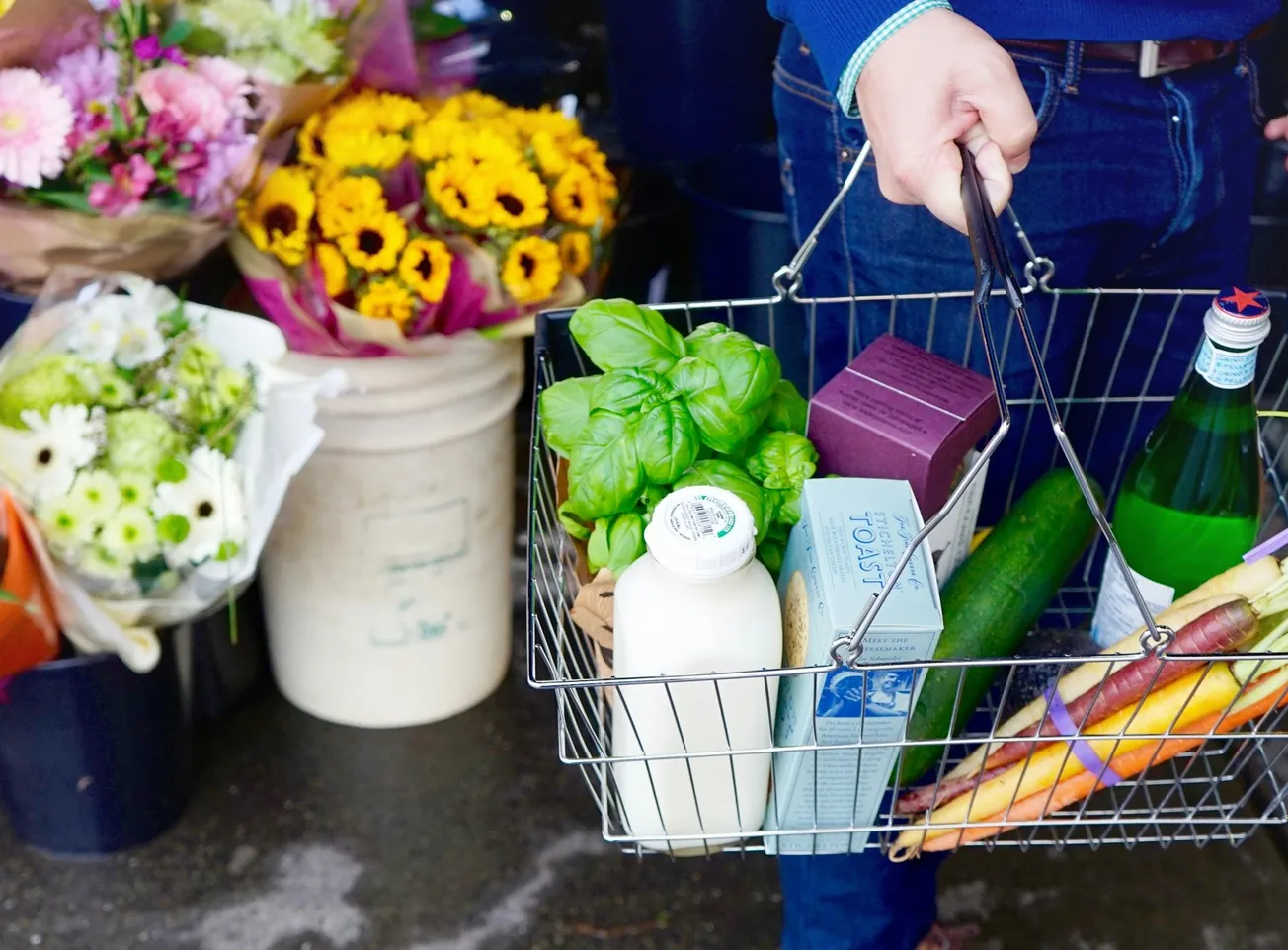Recently, Walmart announced it would open a dozen Walmart Care Clinics, primary care medical facilities, in stores in under-served communities. The announcement reveals as much about Walmart’s view of the future as it does about the state of health care opportunities for retailers and manufacturers at large. And I really do mean “at large.”
For the new health care revolution, or as we called it in our latest How America Shops study, “The Wellness Uprising,” has the potential to create long-term and profitable business opportunities for just about any retailer and manufacturer today.
Health and wellness renaissance
Walmart’s strategy to add new medical services beyond those currently offered in its pharmacies and in-store clinics is only one of many health initiatives that marked a change in the United States this year, including the activation of the Affordable Care Act, CVS Health’s halt to selling cigarettes and Coca-Cola Co.’s upcoming launch of Coca-Cola Life, a lower-calorie, lower-sugar version of its iconic carbonated soft drink.
For a long time there’s been much talk about the poor state of America’s health and the resultant economic impact. Obesity, diabetes, high blood pressure, smoking and heart disease are only some of the conditions constantly discussed in the media, in local and national government, and in educational circles. We’ve had mayors, such as New York City’s Michael Bloomberg, try (and fail) to change the laws around consumption of soft drinks and introduce bicycle rental programs to encourage greener, healthier transportation (with success).
We’ve seen continued growth of retailers, such as Whole Foods Market and Trader Joe’s, who have built their business models on healthier, organic produce and groceries. Now, almost every U.S. supermarket offers organic produce and dairy products. Even convenience store chain 7-Eleven carries some healthier food options, as do McDonald’s, Chipotle and other fast-food chains.
In-store clinics, where nurse practitioners treat a variety of conditions, have grown dramatically in all major U.S. drug store chains (including CVS, Walgreens and Rite Aid), as well as Walmart and Target. Nutritionists are now available for consultation at a number of supermarkets, including Kroger, ShopRite and H-E-B. Emergency care clinics such as CitiMD, alternatives to hospital emergency rooms and doctors’ offices, are popping up at a great rate on many Main Streets. And every day we see more people using some kind of digital technology that enables them to track their steps or measure their calorie intake.
Even Capitol Hill is apparently riding this wave, according to Steve Anderson, president and chief executive officer of the National Association of Chain Drug Stores. At the association’s recent Total Store Expo conference in Boston, he spoke of a “renaissance of health and wellness,” and how “health care innovation 3.0 … is definitely trending in Congress.”
Wellness Uprising
For a long time we have predicted this revolution. Last month we published our latest How America Shops study, conducted with 2,000 consumers around the country.
What’s clear from this research is that it’s not a renaissance; that implies a revival, something more passive. It is rather an uprising. It’s bold, it’s broad and, to coin a phrase, it’s a big tent under which many can play.
What began in recession and post-recession years as an economic necessity to stay well (to keep a job and to not incur the costs of sickness) has become a more holistic approach to being well every day. The Wellness Uprising we see is being driven by a convergence of forces in society, the economy and technology. What began as a fringe movement of people interested in organic food, yoga and shopping at Whole Foods has turned into a national trend, driven by a broad constituency of women and men of all ages, incomes and ethnicities.
They are knowledgeable and passionate about taking care of their own and their family’s health. They state their needs in broad economic and social terms, beyond typical chronic or medical issues. They absolutely understand and value the concept of “wellness” (something we thought might be confined to wealthier Americans).
Healthy but stressed
The study revealed that, in broad terms, most Americans feel healthy: 42% rate their health as “excellent/very good” and 38% “good”; one in five say their health is fair or poor. That’s consistent across generations. However, an income analysis presents a different picture: 33% of those with annual household income under $25,000 say their health is fair/poor; 27% with incomes between $25,000 and $50,000 also feel that way. (It’s important to remember that these two groups represent half the U.S. population.)
This doesn’t mean that lower-income people are unaware of what they need to do to be healthy. Eight out of 10 with incomes under $50,000 say they “know how to live a healthy life.” But they don’t have access to “healthy” or can’t afford it. This is both a concern and an opportunity — and speaks to Walmart’s new strategy.
The No. 1 health concern for all those interviewed was … drum roll … stress. It’s a condition that is so universal it opens the door for many companies to participate and help consumers to achieve better health. Almost half (47%) said their biggest obstacle to living a healthy life is too much stress, second is lack of sleep (37%), and a close third is being overweight (36%).
It comes as no surprise that 76% said “feeling mentally balanced” was the No. 1 factor critical to being healthy. (That has increased 16 percentage points since 2011. In fact, all factors related to taming stress and achieving mental balance have increased since 2011.) Beyond being energized and positive and getting enough sleep, one in three say being healthy is more aesthetic — having clear skin, shiny hair, white teeth and strong nails, and also looking good in clothes. (Told you, it’s a big tent.)
Holistic approach
With that broader view, consumers reported they recognize and/or are actually doing many different things to achieve physical and emotional well-being — all equally important. Eating healthier food, having a healthier lifestyle and taking a more holistic approach to traditional health care practices are three key areas.
Eating well means balanced meals; cooking when possible; limiting cholesterol, saturated fats and sodium; and also knowing where the food comes from. Lifestyle management includes getting enough sleep, exercising (often with a friend), having a pet (yes, really), spending time with friends and family, and using apps to monitor health. Health management includes regular checkups, tracking medical history, keeping up to date with health trends and even buying healthier beauty products.
While the majority say they’re doing the same level of activities as they did two years ago, one-third are doing more. Where they are doing more is the most revealing: Buying natural and organic food, using apps to monitor their health and paying more attention to warnings on their prescription medications top their list. This convergence — being more green and sustainable, using technology and being more responsible — sets the health care context for the future.
Unique opportunity
What’s so appealing about this uprising is the shoppers’ passion to find new choices, from traditional health categories to food, beauty, home, exercise clothes, technology — and even pets. That opens lots of doors to lots of categories, brands and retailers.
The opportunities to help shoppers manage stress are only limited by brand or a retailer’s imagination. Remember, stress comes in lots of different forms, including messy stores, hard-to-shop categories and ill-trained staff. (I’m not just talking about the O-T-C or grocery aisles. I mean the entire store, the parking lot, the website— all of it.) Making the overall shopping experience easier is one of the principal ways to reduce everyday stress.
The other challenge (and opportunity) is that Millennials are leading the uprising — especially as it relates to alternative options. They’re pushing away from traditional health categories, retailers and providers toward natural and homeopathic remedies and alternative providers (such as nutritionists, physical therapists, massage therapists and acupuncturists). Companies really need to consider how to keep this large generation in their stores and with their brands.
Delivering affordable solutions to lower-income shoppers is another big opportunity. They know what good health is, and they want it — it’s just that they cannot afford it.
In a time when many consumer goods categories and retailers still struggle to grow, this wellness movement offers an opportunity for profitable growth. It is grounded in a fundamental shift in consumer attitudes, needs and behaviors, and it crosses many shopper groups, products categories and types of retailers. These opportunities don’t come along every day. So get out your placards and join the rebellion.
WENDY LIEBMANN is CEO of WSL Strategic Retail, a New York City-based consulting firm that helps global companies develop shopper-based retail strategies. For more information on The Wellness Uprising, contact WSL at info@wslstrategicretail.com or call (212) 924-7780.




